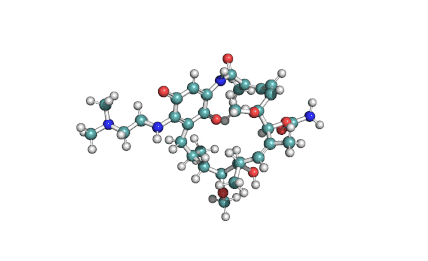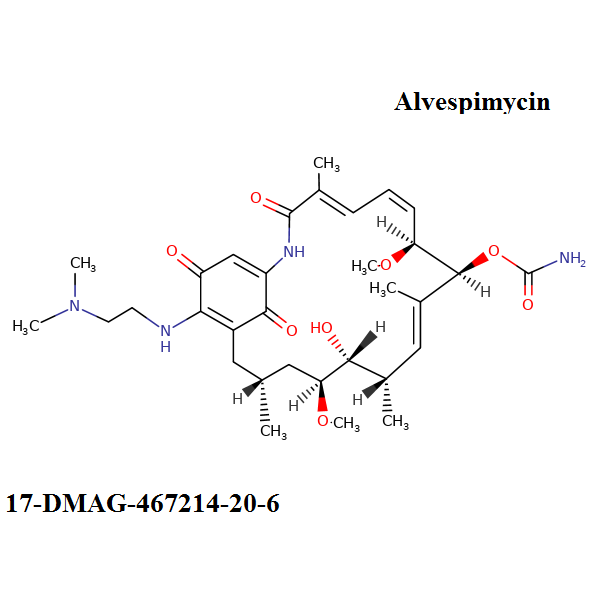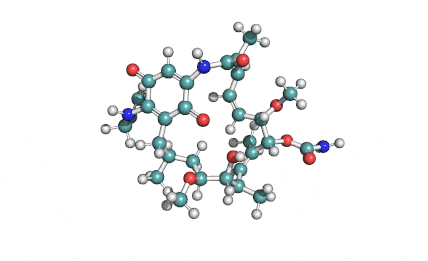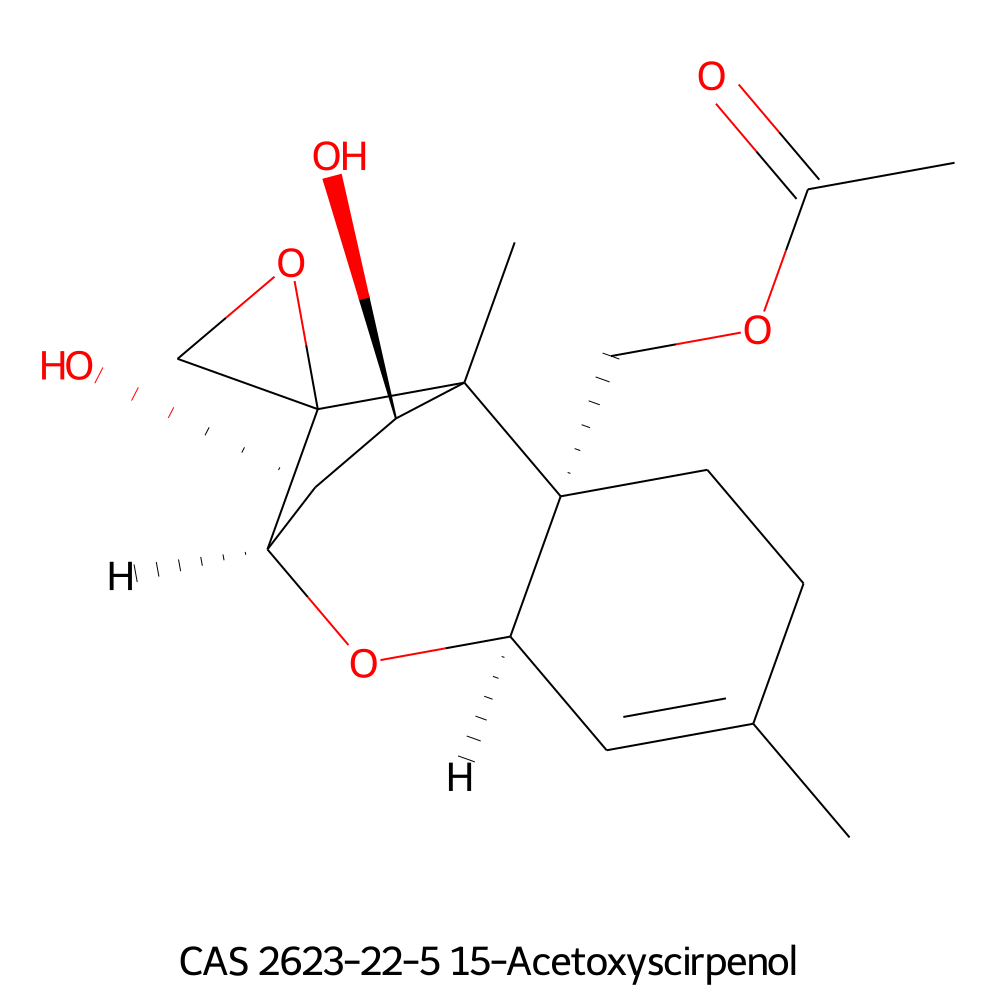17-DMAG
Details
Specifications
Chemical identification
Synonyms:
- 17-DMAG
- Alvespimycin
- 17-Dimethylaminoethylamino-17-demethoxygeldanamycin
RTECS: LX8922000
17-DMAG, also known as Alvespimycin, is a semisynthetic derivate of Geldanamycin, of less hepatotoxicity, improved water solubility.
17-DMAG is an ansamycin antibiotic which binds to Hsp90 (Heat Shock Protein 90) and alters it function.
Further Information
DMSO, Methanol, Ethanol
- Benzoquinone ansamycin class antibiotic
- Geldanamycin derivate
- HSP90 inhibitor
HSP-90 inhibitor; potential anti-cancer drug
Composition
Supply related information
Special Info
Other Fields









